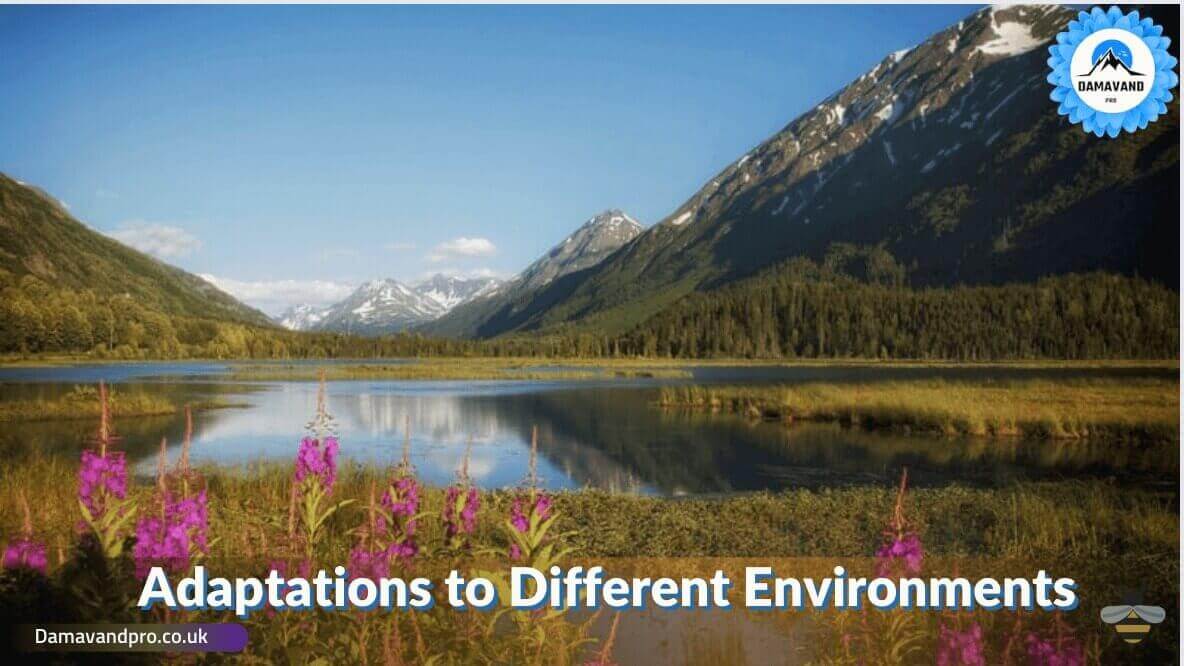+447709283333 | info@damavandpro.com

Adaptations to Different Environments
Wildflower life cycles are complex and interesting, and their adaptations to different environments can vary depending on the species of wildflower.
In general, most wildflowers complete an annual life cycle that involves the germination of a seed, followed by the growth of the plant and the production of flowers, and finally the production of seeds that will start the cycle anew. Along the way, wildflowers must adapt to the unique conditions of their environment, particularly as it relates to temperature, moisture, and soil nutrients, in order to survive and reproduce.
One important adaptation that wildflowers have to their environment is the timing of their life cycle. Some species of wildflowers, such as poppies, can germinate and bloom shortly after the first rains of spring, while others, such as cactus flowers, may not bloom until late summer when temperatures are much hotter.
This adaptation allows the species to take advantage of the available resources in the environment, such as sunlight and water, while avoiding adverse conditions such as freezing temperatures. Wildflowers also have adaptations to their environment in terms of their physical structure.
For example, some species of wildflowers have wide, shallow roots that help them capture moisture from the soil, while others have long, deep roots that allow them to access moisture from deeper in the ground. Additionally, some species of wildflowers have thick, waxy leaves that help protect them from the intense heat of the summer months, while others have thin, delicate leaves that can help them stay cool.
Finally, wildflowers have adaptations to their environment in terms of their reproductive strategies. Certain species of wildflowers rely on pollinators, such as bees, butterflies, and birds, to spread their pollen and ensure successful reproduction.
Other species of wildflowers, such as those that grow in dry climates, may rely on the wind to spread their pollen and ensure successful reproduction. Overall, wildflowers have a variety of adaptations to their environment that help them survive and reproduce.
These adaptations are essential for their survival, as they allow the wildflowers to take advantage of available resources while avoiding adverse conditions, such as freezing temperatures and intense heat. Additionally, these adaptations allow the wildflowers to reproduce successfully, ensuring the continuation of their species.
Example of Adaptations to Different Environments
Concrete example:
Poppies are a species of wildflower that have adapted to the environment by germinating and blooming shortly after the first rains of spring. This adaptation allows the poppies to take advantage of the available sunlight and water in the springtime, while avoiding the freezing temperatures of winter. Additionally, poppies have wide, shallow roots that help them capture moisture from the soil.
Cacti are a species of wildflower that have adapted to the environment by not blooming until late summer when temperatures are much hotter. This adaptation allows the cacti to take advantage of the intense heat of the summer months while avoiding the freezing temperatures of winter. Additionally, cacti have thick, waxy leaves that help protect them from the intense heat of the summer months.
Birds are an important pollinator for certain species of wildflowers, allowing them to spread their pollen and ensure successful reproduction. This adaptation allows the wildflowers to take advantage of the birds’ ability to spread their pollen while avoiding the need to rely on the wind to spread the pollen.
Test your knowledge about Adaptations to Different Environments
What is one important adaptation that wildflowers have to their environment?
A. The production of flowers.
B. The production of seeds.
C. The timing of their life cycle. (Right)
D. Their physical structure.
